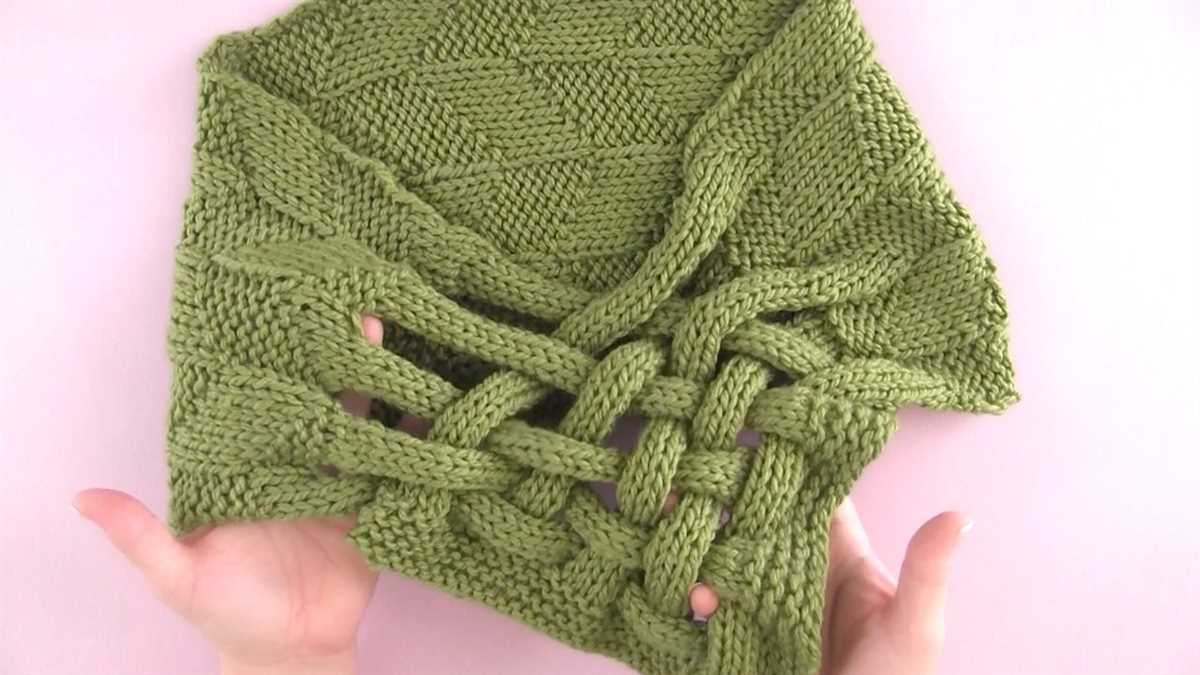
Winter is the perfect time to indulge in cozy and warm accessories, and a knitted scarf is a must-have for any wardrobe. Knitting is not only a practical skill, but also a therapeutic and creative activity that allows you to create beautiful and unique pieces. Whether you are a beginner knitter or an experienced one, this free knitting pattern for a scarf is a great project to take on.
This scarf pattern is suitable for all skill levels and can be easily customized to suit your personal style and preferences. The finished scarf will not only keep you warm during the chilly winter months, but also add a touch of style to any outfit. Whether you prefer a simple and classic design or something more intricate and eye-catching, this pattern can be adapted to create the perfect scarf for you.
This pattern requires basic knitting stitches and techniques such as casting on, knitting, and binding off. It is knit in a ribbed pattern, which gives the scarf its beautiful texture and stretchiness. The ribbed pattern also creates a reversible design, making it versatile and suitable for both men and women.
So grab your knitting needles and some cozy yarn, and get ready to create your very own hand-knit scarf. Whether you want to keep it for yourself or gift it to someone special, this free knitting pattern for a scarf is sure to be a hit.
Best Free Knitting Patterns for Scarves
Looking for the perfect knitting pattern for a scarf? Whether you’re a beginner or an experienced knitter, you’re sure to find something you love in this collection of the best free knitting patterns for scarves.
One popular option is the “Garter Stitch Scarf”. This pattern is great for beginners, as it only requires knowledge of the basic garter stitch. The simple design makes it easy to customize with different colors or yarn types. The resulting scarf is cozy and versatile, perfect for keeping warm on chilly days.
If you’re looking for a more challenging project, the “Cable Knit Scarf” is a great choice. This pattern uses cable stitches to create an intricate design that adds depth and texture to the scarf. While it may take a bit more skill to master, the end result is a beautiful and stylish accessory that will elevate any outfit.
For those who prefer a more casual and relaxed look, the “Infinity Scarf” is a great option. This pattern creates a looped scarf that can be worn in a variety of ways, making it a versatile accessory for any wardrobe. The best part is that it can be knit in no time using chunky yarn and large needles.
Another popular choice is the “Lace Scarf”. This delicate pattern features intricate lace stitches that create a light and airy fabric. Perfect for adding a touch of elegance to any outfit, this scarf is a timeless piece that can be worn year-round.
Whether you’re looking for a simple and cozy scarf or an intricate and stylish accessory, these free knitting patterns have something for everyone. So grab your needles and yarn, and get ready to create a scarf that’s as unique as you are!
Easy Beginner Knitting Patterns
Knitting is a great hobby that allows you to create beautiful and useful items with just a pair of needles and some yarn. If you’re a beginner knitter, it’s important to start with simple and easy projects that will help you learn the basics and build your confidence. Luckily, there are plenty of beginner-friendly knitting patterns available.
One of the easiest knitting patterns for beginners is a simple scarf. This project only requires you to know how to cast on, knit, and cast off, making it perfect for those who are just starting out. There are many free knitting patterns available for scarves, ranging from basic garter stitch scarves to more intricate patterns with different stitches and textures.
Knitted dishcloths are another great beginner knitting project. These small, practical items are perfect for practicing your knitting skills and experimenting with different stitch patterns. They also make great gifts for friends and family. There are many free patterns for knitted dishcloths available online, and they typically require basic knitting stitches like knit and purl.
- Beanies are also a popular choice for beginner knitters. Knitted beanies are not only stylish and warm, but they are also quick and easy to make. There are many free patterns available for simple knitted beanies, and they often only require basic knitting stitches and techniques like knitting in the round.
- Blankets are another beginner-friendly knitting project. While they may take longer to complete than smaller projects, knitting a blanket can be a rewarding and relaxing experience. There are many free patterns available for simple knit blankets that only require basic stitches like knit and purl.
- Scarves with different stitch patterns can also be a great way to challenge yourself as a beginner knitter. Once you have mastered the basic knit stitch, you can move on to more advanced patterns that incorporate different stitches like ribbing, cables, or lace. There are many free patterns available for scarves with different stitch patterns that can help you improve your skills.
When choosing a beginner knitting pattern, it’s important to start with something that matches your skill level and interests. Remember to take your time and practice each stitch until you feel comfortable before moving on to more complex patterns. With dedication and practice, you’ll soon be able to tackle more advanced knitting projects.
Chunky Knit Scarf Patterns
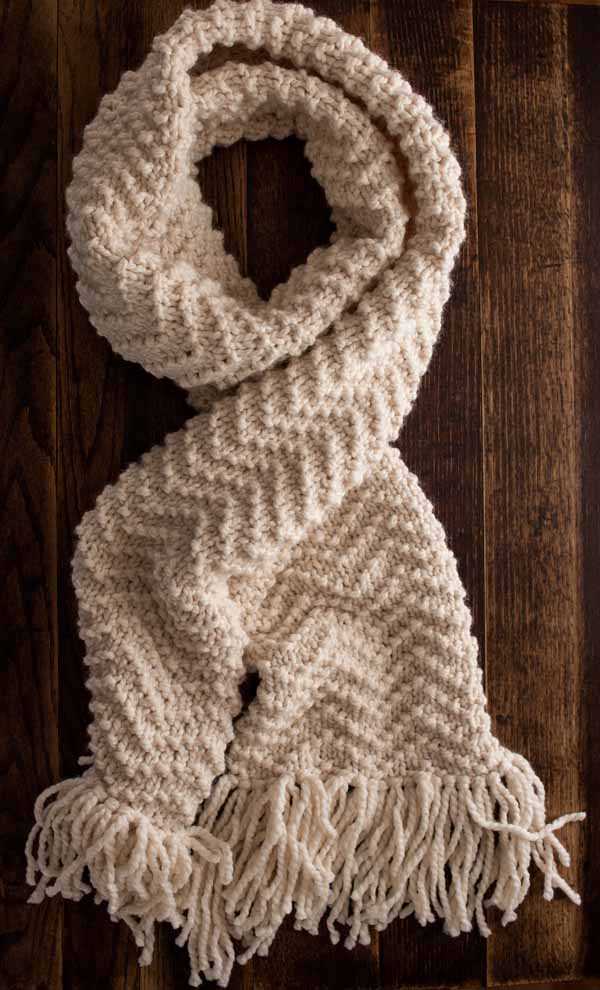
Chunky knit scarves are a winter essential, providing warmth and style. Whether you’re a beginner or an experienced knitter, there are plenty of chunky knit scarf patterns available to suit your skill level and personal taste. From simple garter stitch patterns to intricate cable and lace designs, there’s something for everyone.
A popular chunky knit scarf pattern is the basic garter stitch scarf. This pattern is perfect for beginners as it only requires knowledge of the knit stitch. By using bulky or super bulky weight yarn and large needles, you can create a cozy scarf in no time. The simplicity of the garter stitch allows the texture and thickness of the yarn to shine through, making it a classic choice for chunky scarves.
If you’re looking to add some interest to your chunky knit scarf, consider trying a pattern that incorporates cables. Cable knitting involves crossing stitches over each other to create intricate and textured designs. A chunky cable knit scarf is not only stylish but also provides extra warmth and coziness. With different cable pattern options available, you can choose a simple braided cable or a more complex Celtic knot design.
Lace knitting is another popular technique for creating chunky knit scarves. While lace patterns might seem delicate, when worked with bulky yarn, they can result in a unique and eye-catching scarf. Lace patterns often feature intricate motifs and openwork, adding a touch of elegance to your winter accessories. Consider knitting a chunky lace scarf with a blend of wool and silk yarn for a luxurious feel.
When choosing your chunky knit scarf pattern, consider the type of yarn, needle size, and desired level of complexity. Chunky yarns, such as wool or acrylic blends, work best for achieving a thick and cozy scarf. Experiment with different stitch patterns and color combinations to create a scarf that reflects your personal style. With the right pattern and materials, you can create a chunky knit scarf that will keep you warm and fashionable all winter long.
Lace Scarf Knitting Patterns
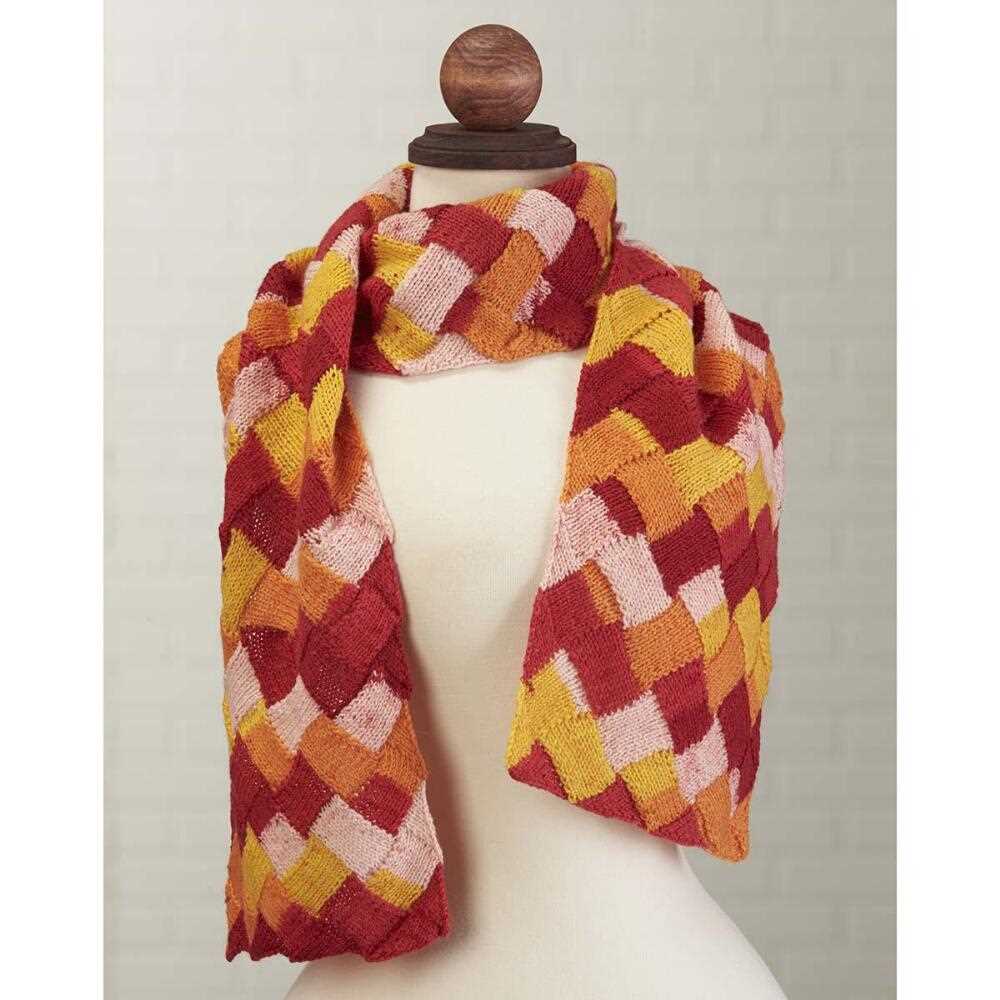
If you’re looking for an elegant and delicate accessory to add to your wardrobe, lace scarf knitting patterns are a perfect choice. Lace patterns add a touch of femininity and sophistication to any outfit, making them versatile and timeless. Whether you’re a beginner or an experienced knitter, there are lace scarf patterns available for every skill level.
One popular lace scarf pattern is the “Feather and Fan” pattern. This pattern creates a beautifully textured scarf with a repeating feather and fan motif. The openwork design of the lace pattern adds an airy and light feel to the scarf, making it perfect for warmer weather or as an accessory for a special occasion.
Another stunning lace scarf pattern is the “Lily of the Valley” pattern. This pattern features delicate lily of the valley motifs that cascade down the length of the scarf. The intricate lacework creates a stunning floral design that adds an elegant touch to any outfit. Knitted in a lightweight yarn, this scarf is perfect for layering and can be worn year-round.
If you’re an adventurous knitter, you may want to try the “Estonian Lace” pattern. This traditional lace pattern is known for its intricate and detailed designs. The Estonian lace scarf is a true work of art, with its delicate and intricate lace motifs. Knitting this pattern requires patience and attention to detail, but the end result is a stunning and unique scarf that is sure to be a conversation starter.
When choosing a lace scarf pattern, be sure to consider the weight of the yarn and the skill level required. Thinner yarns create a more delicate and lightweight scarf, while thicker yarns create a warmer and more substantial scarf. Additionally, lace patterns can vary in difficulty, so choose a pattern that matches your skill level and comfort.
With lace scarf knitting patterns, you can create beautiful and timeless accessories that add a touch of elegance to any outfit. Whether you’re looking for a light and airy scarf for warmer weather or a more intricate and detailed design, there is a lace pattern out there for you. So grab your needles and start knitting your own lace scarf today!
Infinity Scarf Knitting Patterns
1. Basic Infinity Scarf
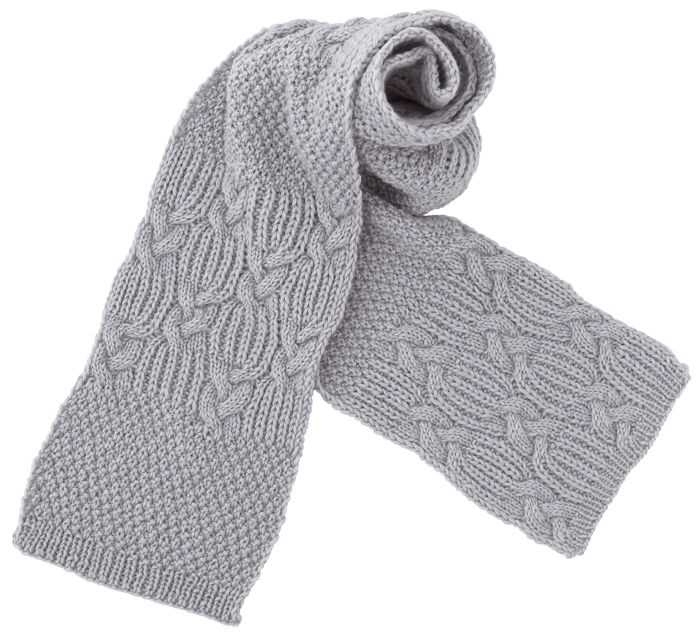
If you’re new to knitting or looking for a simple project, this basic infinity scarf pattern is perfect for you. With just basic knitting stitches, you can create a cozy and stylish accessory to keep you warm all winter long. The pattern requires chunky yarn and large needles to create a loose and airy texture. You can choose any color you like to match your wardrobe or make it as a gift for a friend.
2. Cable Knit Infinity Scarf
If you’re looking for a more challenging project, try knitting a cable knit infinity scarf. The cable pattern adds a beautiful and intricate detail to the scarf, making it a statement piece that stands out. This pattern requires basic cable knitting skills, but once you get the hang of it, you’ll be able to create a variety of cable designs. The scarf can be made with any type of yarn, but a wool blend will give it a cozy and warm feel.
3. Lace Infinity Scarf
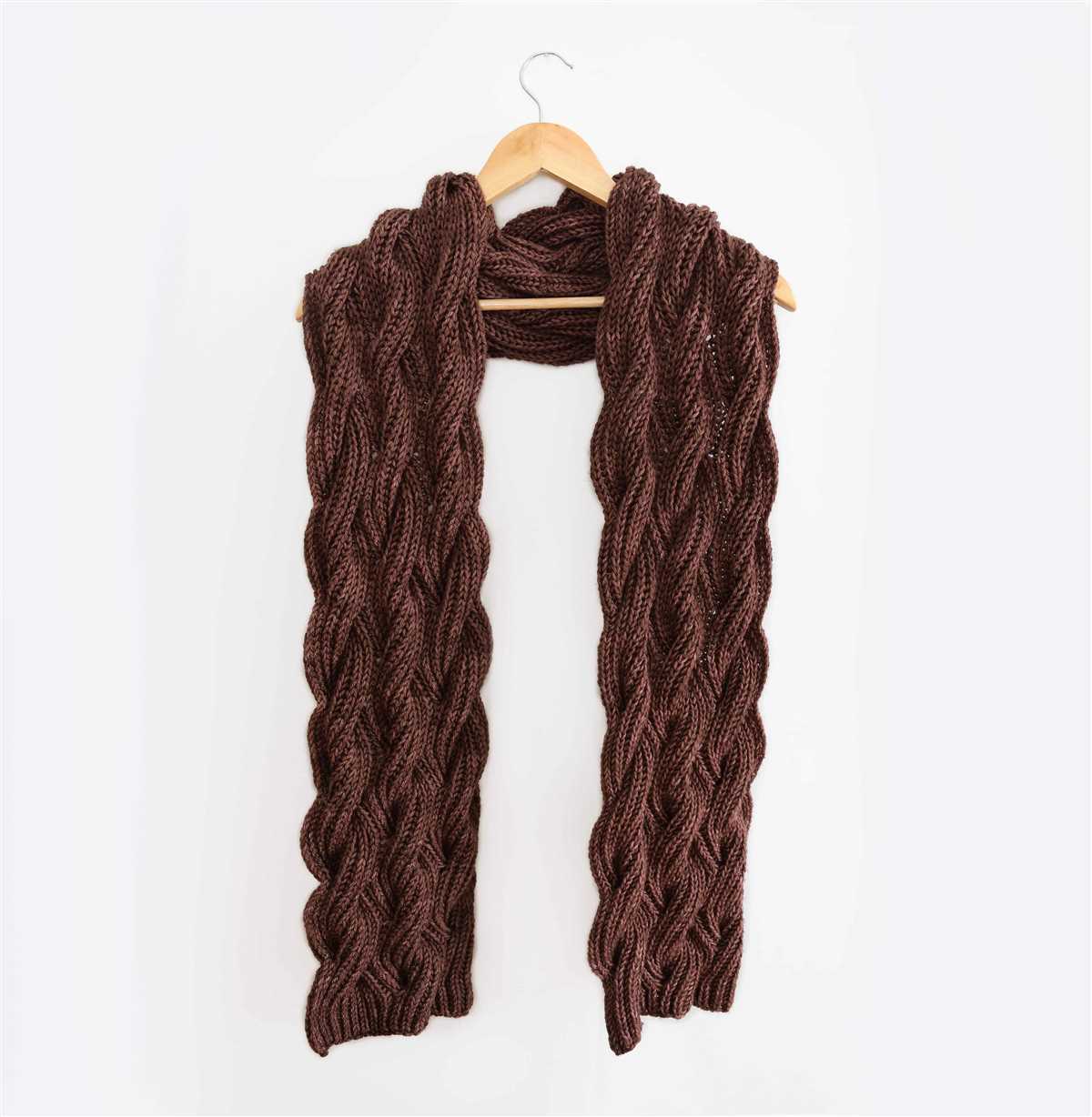
If you prefer a delicate and feminine look, a lace infinity scarf is a perfect choice. The lace pattern adds an elegant and ethereal touch to the scarf, making it a versatile accessory that can be worn for both casual and formal occasions. This pattern requires lace knitting skills, but once you master the techniques, you’ll be able to create intricate lace designs. Choose a lightweight and soft yarn to create a scarf that drapes beautifully.
4. Colorful Striped Infinity Scarf
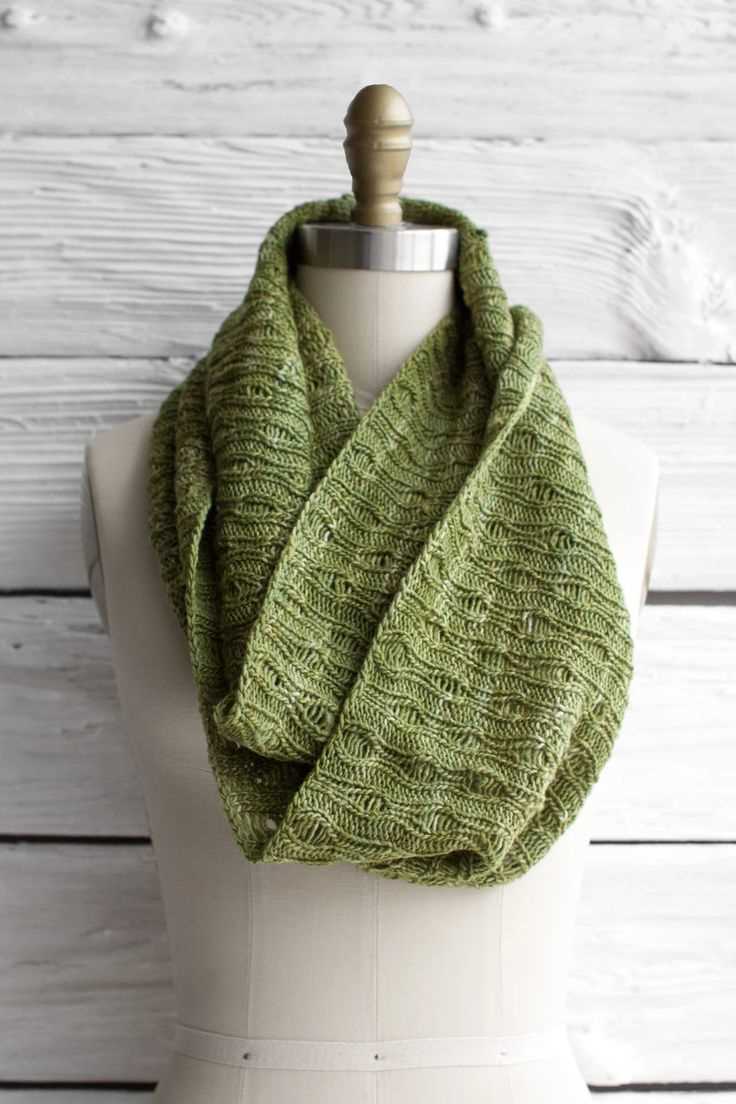
If you love playing with colors, try knitting a colorful striped infinity scarf. This pattern allows you to experiment with different color combinations, creating a unique and vibrant accessory. You can choose as many colors as you like and create wide or narrow stripes to suit your style. This pattern is a great way to use up your leftover yarns and create a fun and colorful scarf that will brighten up any winter outfit.
How to Choose the Right Yarn for Your Scarf
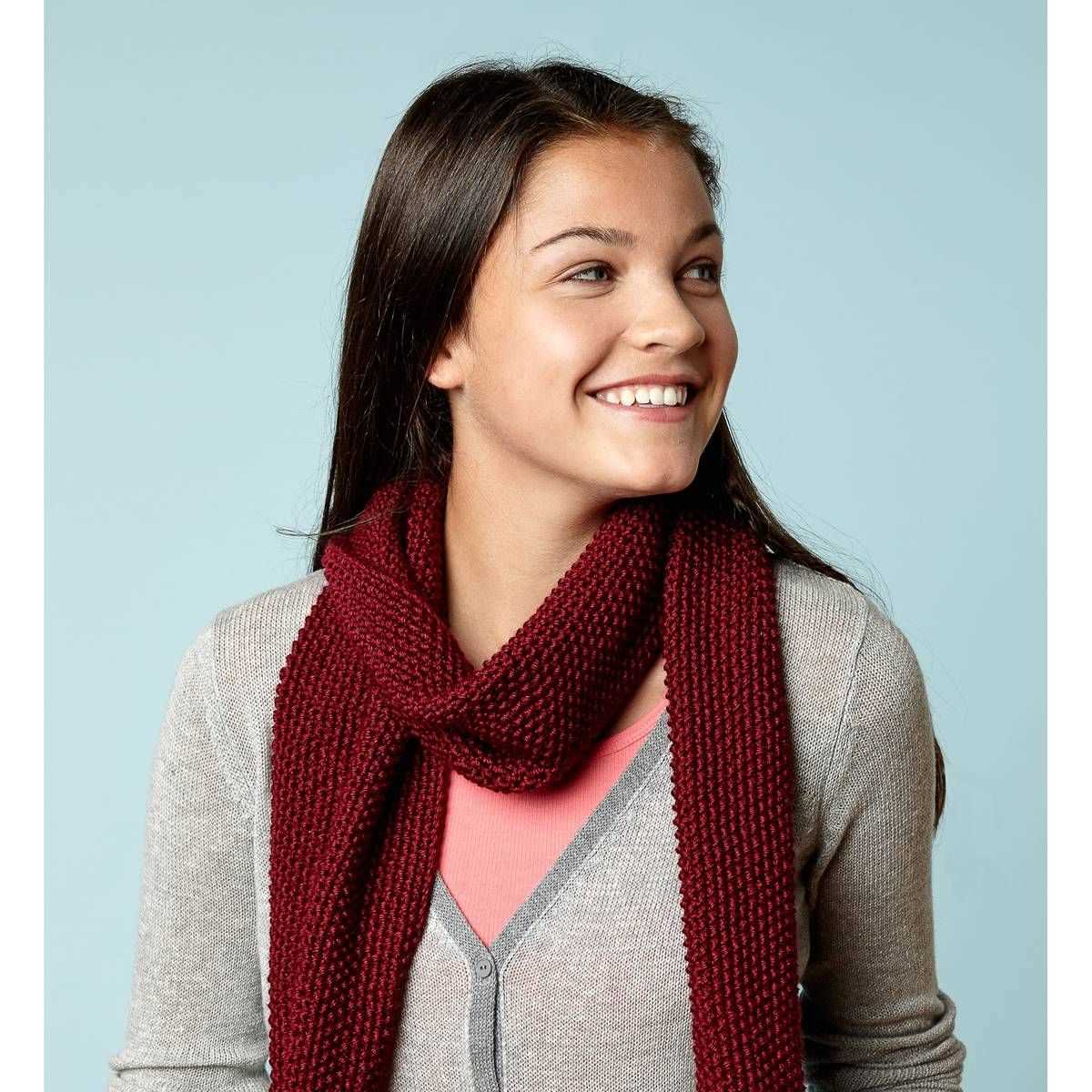
Choosing the right yarn for your scarf is essential to ensure that it not only looks great but also feels comfortable to wear. Here are some factors to consider when selecting yarn for your knitting project:
1. Fiber Content
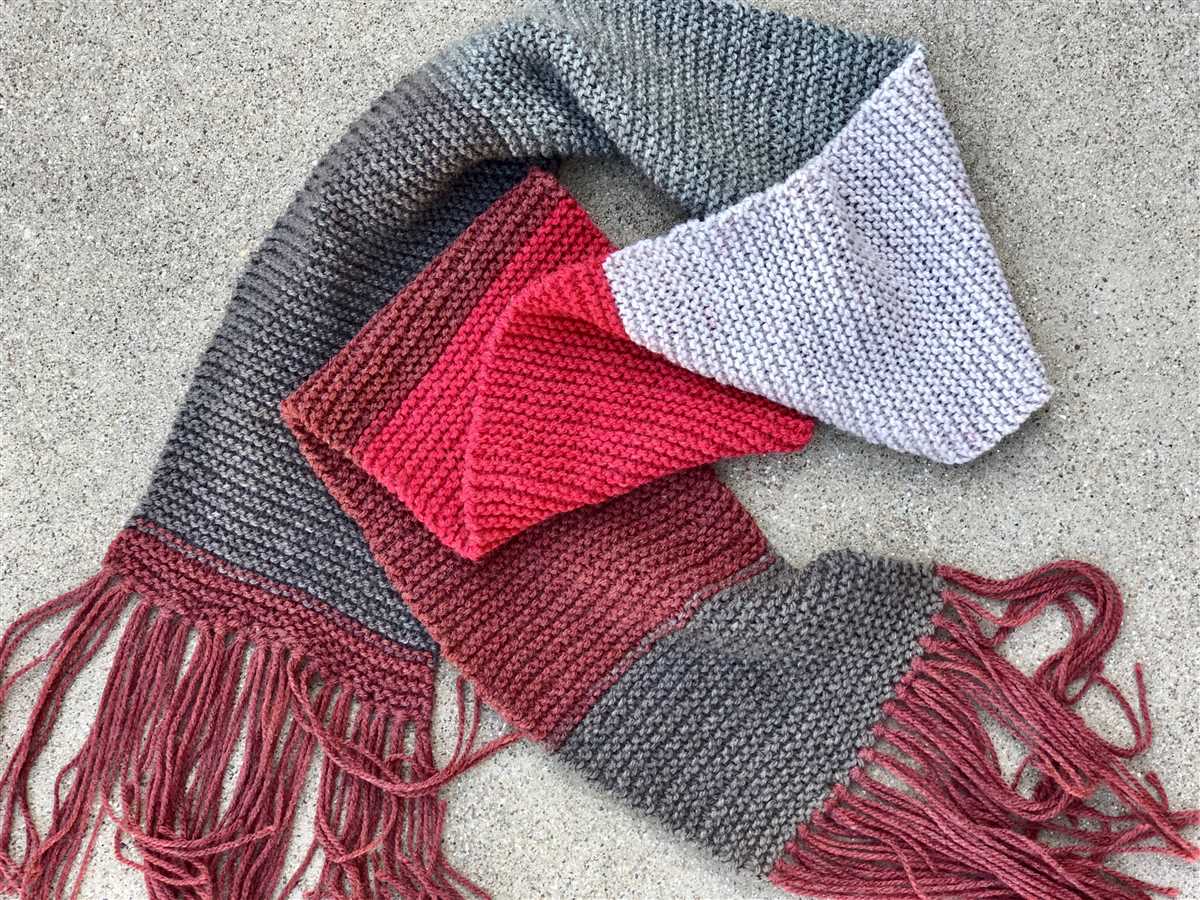
The fiber content of the yarn will greatly affect the look, feel, and durability of your scarf. Some common options include wool, acrylic, cotton, silk, and blends. Wool yarns are warm and cozy, while acrylic is often more affordable and easy to care for. Cotton and silk yarns offer a lighter and cooler option, perfect for spring or summer scarves.
2. Weight
The weight or thickness of the yarn is another important factor to consider. The weight will determine the drape and warmth of the scarf. Bulky or chunky yarns create a thicker and warmer scarf, while lightweight or fingering yarns are better suited for delicate and lightweight scarves. Consider the season and climate in which the scarf will be worn to determine the appropriate weight.
3. Color and Texture
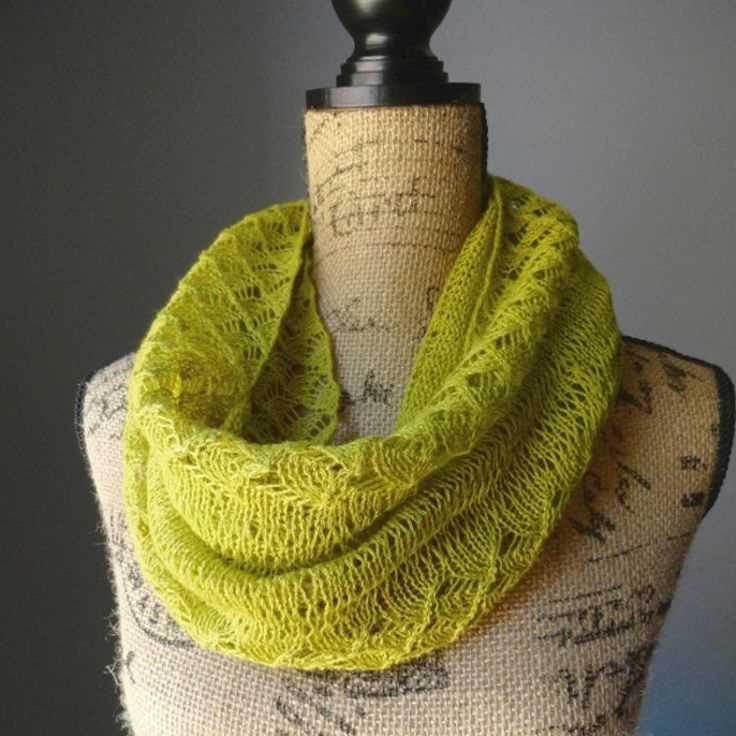
The color and texture of the yarn can add personality and a unique touch to your scarf. Consider the colors that will complement your wardrobe or make a statement. Additionally, the texture of the yarn, such as smooth, fluffy, or textured, can add depth and interest to the finished scarf. Experiment with different yarns to find the perfect combination of color and texture for your project.
4. Knitting Techniques
Take into account the knitting techniques that will be used in your scarf pattern. Some yarns are better suited for specific stitches or techniques. For example, a variegated yarn may showcase intricate stitch patterns, while a solid-colored yarn may highlight simpler stitches. Consult the pattern instructions or seek guidance from experienced knitters to choose a yarn that will work well with your chosen techniques.
By considering these factors, you can choose the right yarn for your scarf project, resulting in a beautiful and comfortable finished product. Happy knitting!
Different Yarn Weights and Their Uses
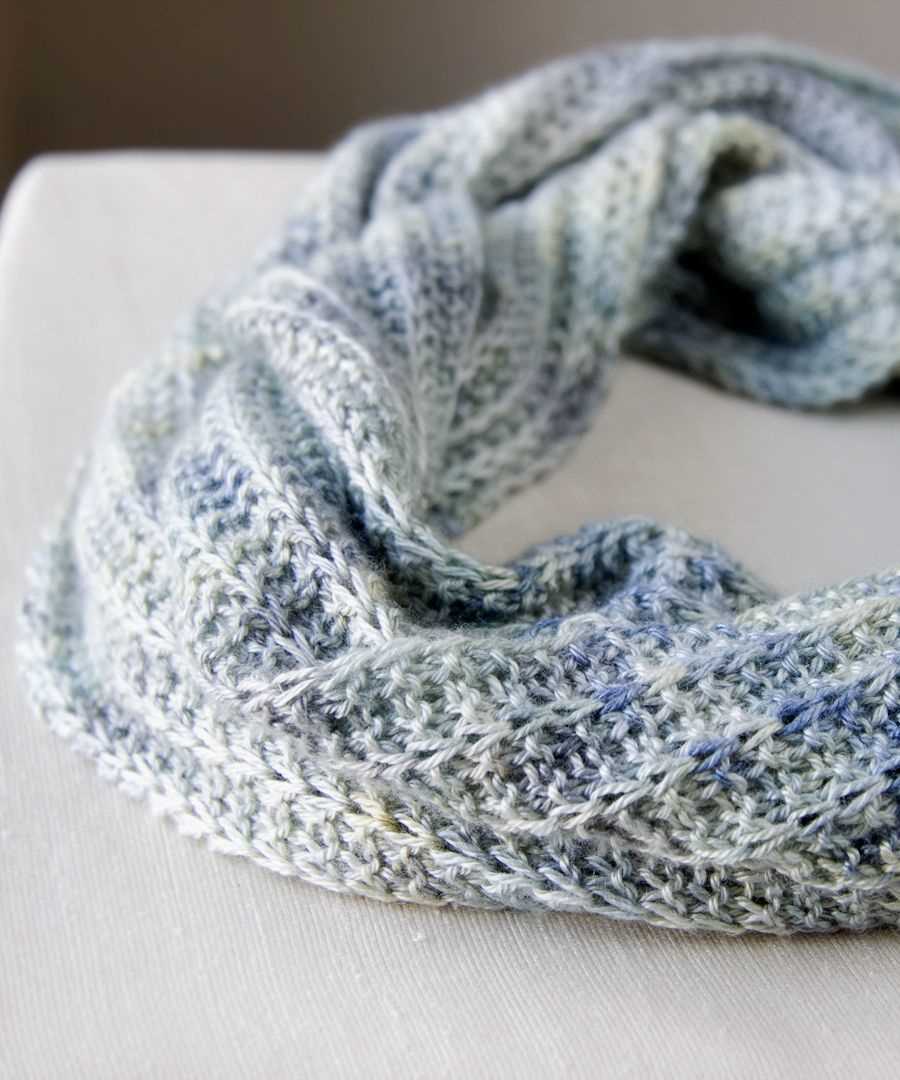
When it comes to knitting, the weight of the yarn you choose can have a big impact on the finished product. Yarn weight refers to the thickness of the yarn and is usually described using numbers from 0 to 7, with 0 being the finest and 7 being the thickest. Understanding the different yarn weights and their uses can help you choose the right yarn for your project and achieve the desired results.
Fingering Weight Yarn (1)
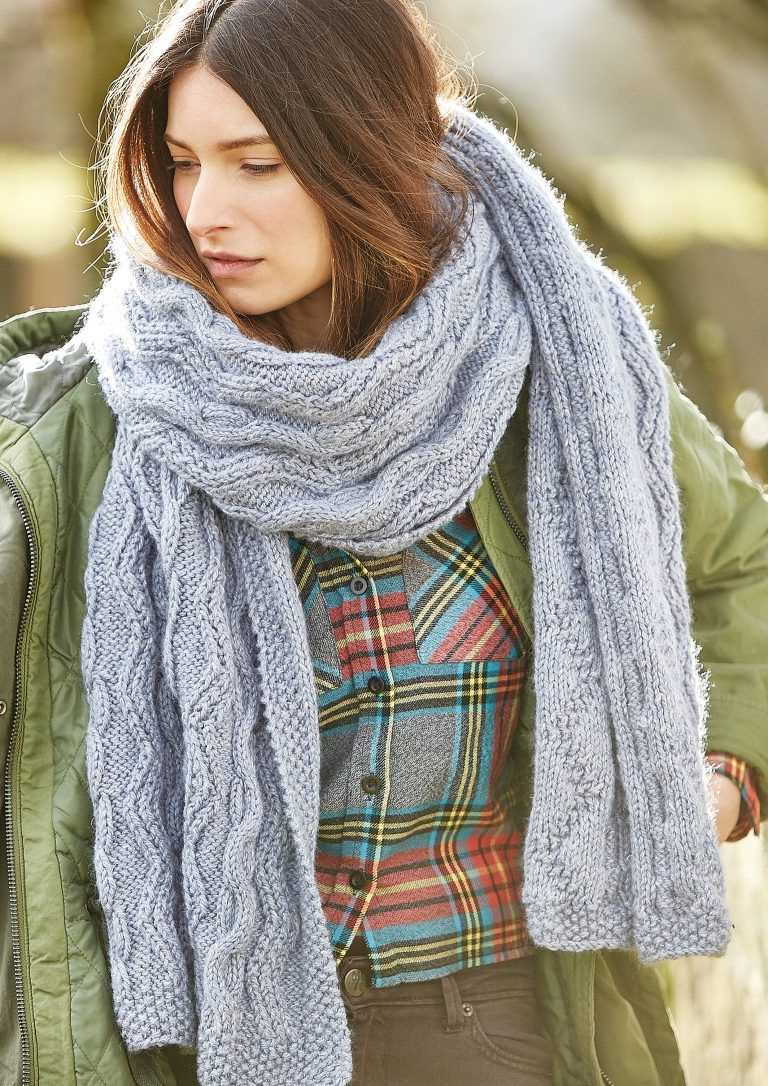
Fingering weight yarn is also known as sock yarn and is the thinnest weight available. It is commonly used for knitting delicate items such as lace shawls, baby clothes, and lightweight garments. Due to its fine texture, it produces a dainty and intricate look.
- Recommended needle size: 2.25mm – 3.5mm
- Recommended gauge: 28-32 stitches per 4 inches
Sport Weight Yarn (2)
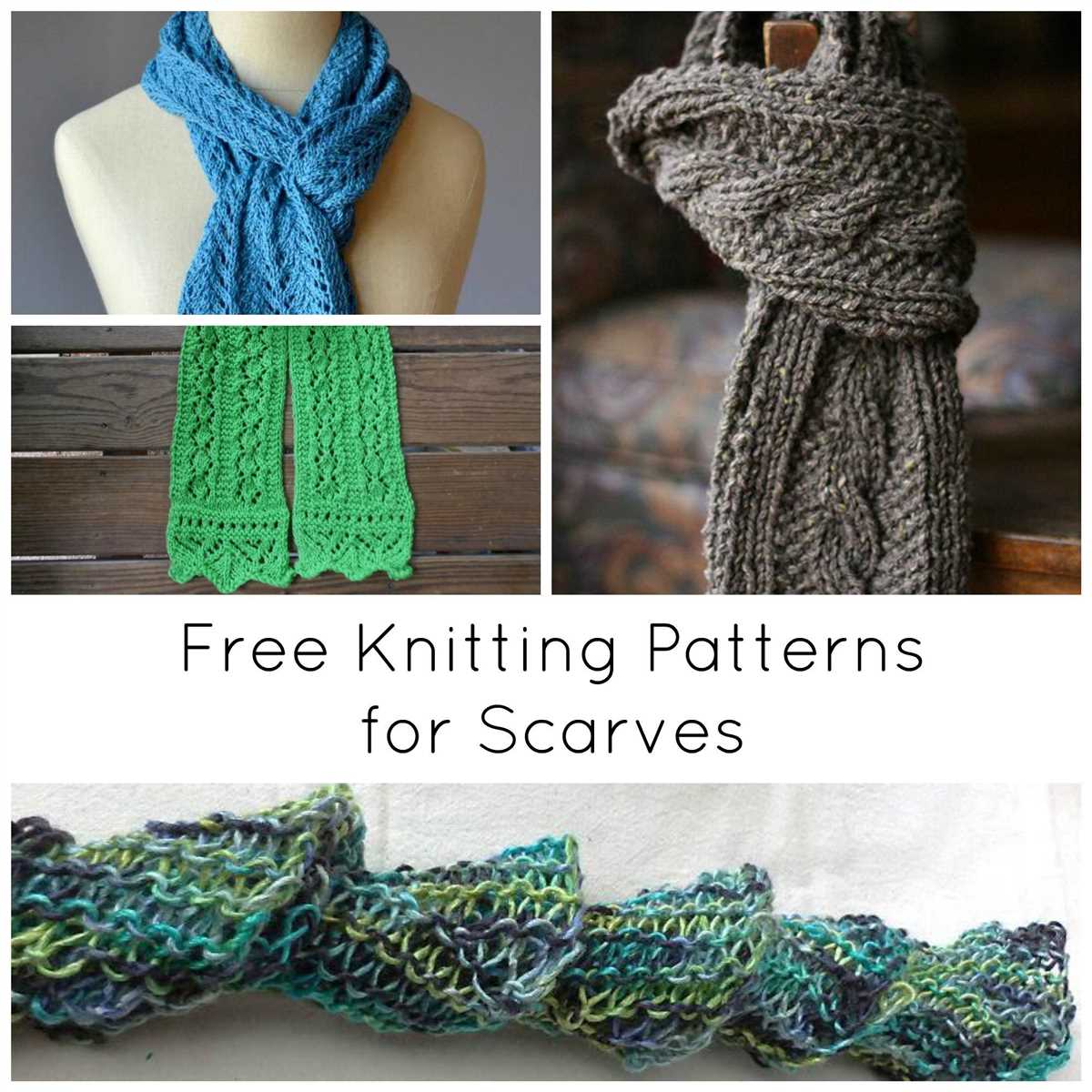
Sport weight yarn is a step up from fingering weight and is often used for lightweight sweaters, scarves, and baby items. It is slightly thicker and provides more warmth than fingering weight yarn, while still maintaining a delicate and airy appearance.
- Recommended needle size: 3.5mm – 4mm
- Recommended gauge: 23-26 stitches per 4 inches
Worsted Weight Yarn (4)
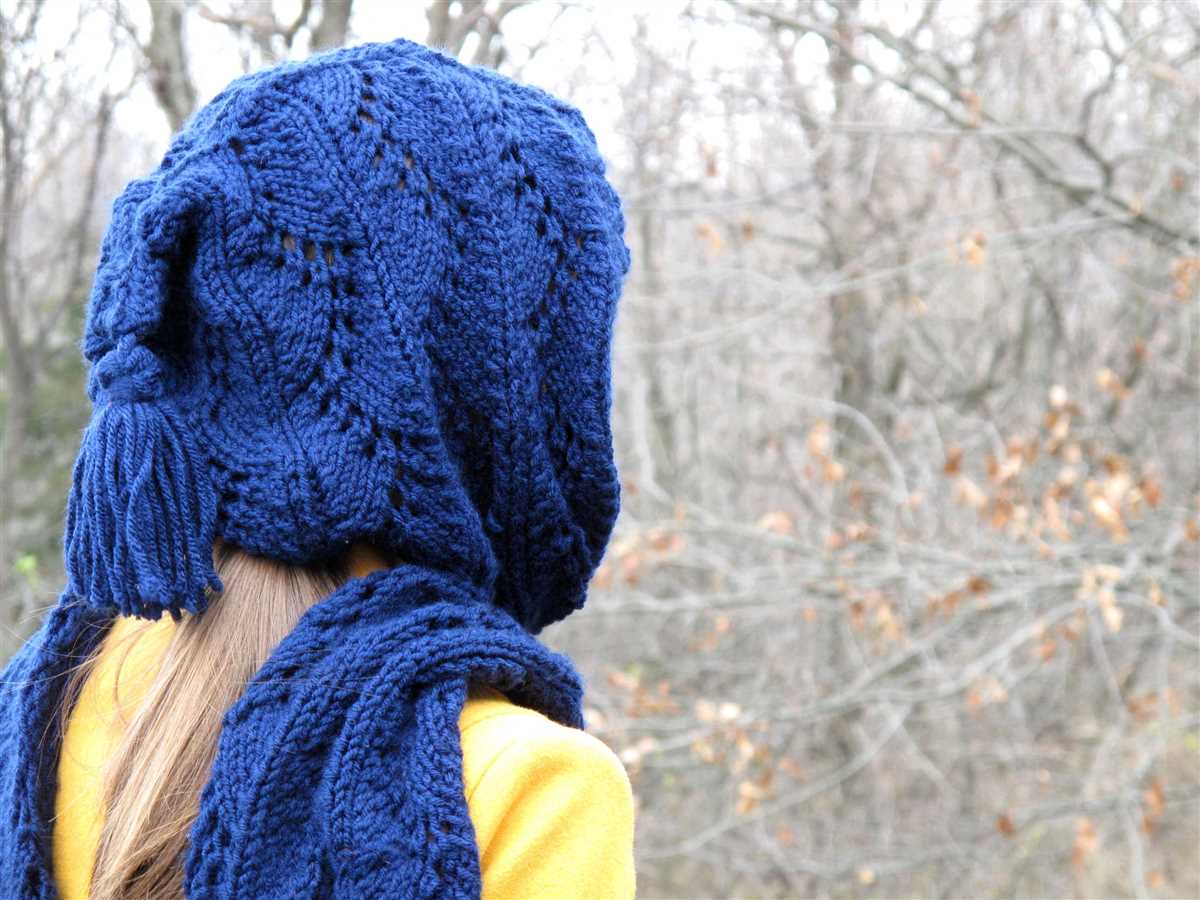
Worsted weight yarn is one of the most popular and versatile yarn weights. It is commonly used for a wide range of projects, including blankets, hats, scarves, and sweaters. It offers a good balance of durability, warmth, and stitch definition, making it suitable for both beginner and experienced knitters.
- Recommended needle size: 4.5mm – 5.5mm
- Recommended gauge: 16-20 stitches per 4 inches
Bulky Weight Yarn (6)
Bulky weight yarn is thick and chunky, making it perfect for quick and cozy projects. It is commonly used for making blankets, hats, and scarves that provide extra warmth and comfort. Due to its larger size, it knits up quickly and is great for beginners.
- Recommended needle size: 5.5mm – 8mm
- Recommended gauge: 12-15 stitches per 4 inches
In summary, the weight of the yarn you choose can determine the overall look, feel, and functionality of your knitted project. From delicate lacework to chunky blankets, there is a yarn weight for every type of project. By understanding the different yarn weights and their uses, you can confidently select the perfect yarn for your next knitting adventure.
Choosing the Right Fiber for Your Scarf
When knitting a scarf, one of the most important decisions you’ll make is choosing the right fiber. The fiber you choose will not only affect the look and feel of your scarf, but also its performance and durability.
Wool: Wool is a popular choice for scarves due to its natural warmth and insulation properties. It is soft, breathable, and can retain heat even when wet. Wool scarves are perfect for chilly weather and can be easily stretched to accommodate different wrapping styles.
Cotton: If you’re looking for a lightweight and breathable option, cotton is the way to go. Cotton scarves are great for warmer climates or for people who prefer a more breathable fabric. They are soft, hypoallergenic, and easy to care for.
Acrylic: Acrylic is a synthetic fiber that is known for its affordability and durability. It is a great choice for beginners as it is easy to work with and comes in a wide range of colors. Acrylic scarves are machine washable and resistant to fading and pilling.
Silk: For a touch of luxury, silk scarves are the way to go. Silk is a natural fiber that is soft, smooth, and lightweight. It has excellent draping properties and adds a sophisticated touch to any outfit. Silk scarves require careful hand washing or dry cleaning to maintain their luster.
Alpaca: Alpaca fiber comes from the fleece of the alpaca, a domesticated species of South American camelid. Alpaca scarves are known for their incredible softness and warmth. They are hypoallergenic and have a natural sheen. Alpaca fiber is also highly breathable, making it suitable for both warm and cold weather.
Ultimately, the choice of fiber for your scarf depends on personal preference and the intended use of the scarf. Keep in mind factors such as climate, comfort, and care requirements when making your decision. Experiment with different fibers to find the one that suits your knitting style and desired outcome.
Essential Knitting Supplies for Scarf Patterns
When it comes to knitting a scarf, having the right supplies is essential to ensure a successful and enjoyable knitting experience. Here are some must-have knitting supplies for scarf patterns:
1. Yarn
To start your scarf project, you’ll need to choose the right yarn. Consider the thickness and texture of the yarn, as it will determine the appearance and feel of your finished scarf. Opt for a yarn that is suitable for the desired length and warmth of your scarf.
2. Knitting Needles
Knitting needles are available in various sizes and materials. Depending on the thickness of your yarn, select the correct needle size. Circular or straight needles can be used for scarf knitting. Choose a material that feels comfortable in your hands and helps you achieve the desired tension in your stitches.
3. Stitch Markers
Stitch markers are useful tools that can help you keep track of your pattern and mark important sections in your scarf. They can be placed on the needles to indicate stitch changes or pattern repeats. Choose stitch markers that easily slide on and off the needles and won’t snag your yarn.
4. Scissors
A pair of sharp scissors is necessary for cutting yarn and trimming any loose ends. Keep them handy to easily snip off any excess yarn and tidy up your finished scarf.
5. Measuring Tape
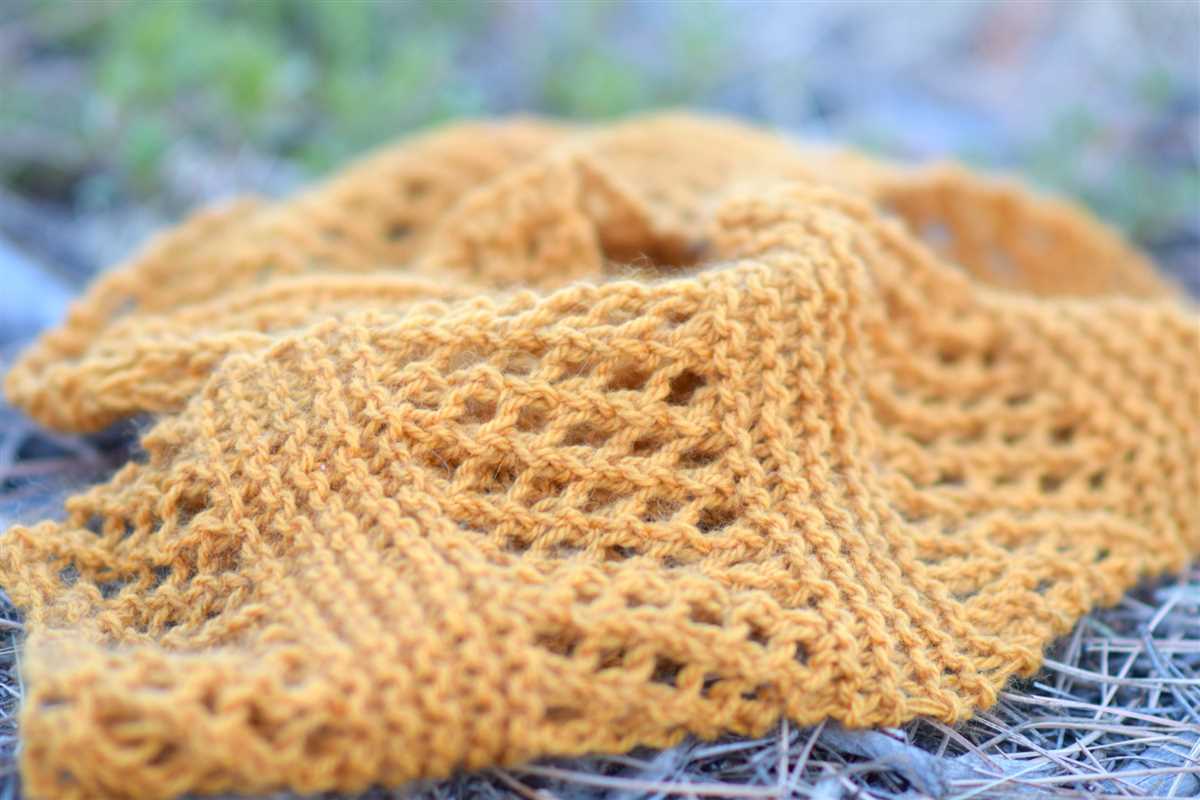
A measuring tape is essential for checking the length and width of your scarf while knitting. It helps you achieve the desired size and ensures consistency throughout your project.
6. Tapestry Needle
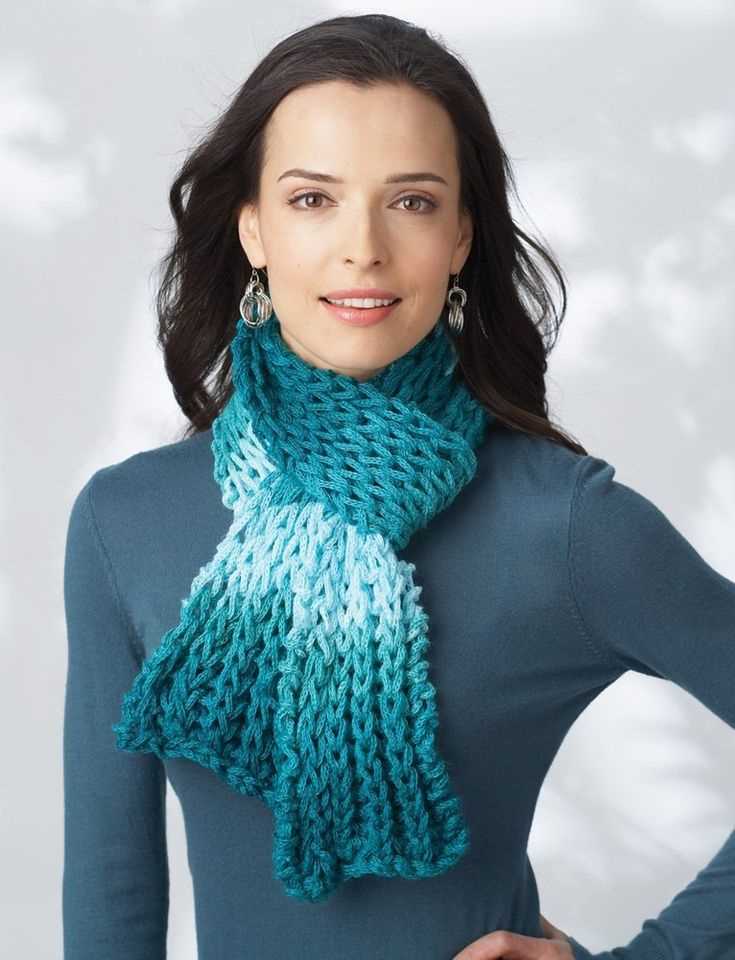
A tapestry needle is used for weaving in loose ends and finishing touches. It’s essential for securing any leftover yarn tails and creating a neat and polished look for your scarf.
- In conclusion
- By having these essential knitting supplies, you’ll be well-equipped to start your scarf pattern project. Choose quality materials that suit your preferences and ensure a comfortable knitting experience. Get creative with yarn choices and experiment with different stitch patterns to create unique and beautiful scarves.
Knitting Needles: Which Size and Type to Use
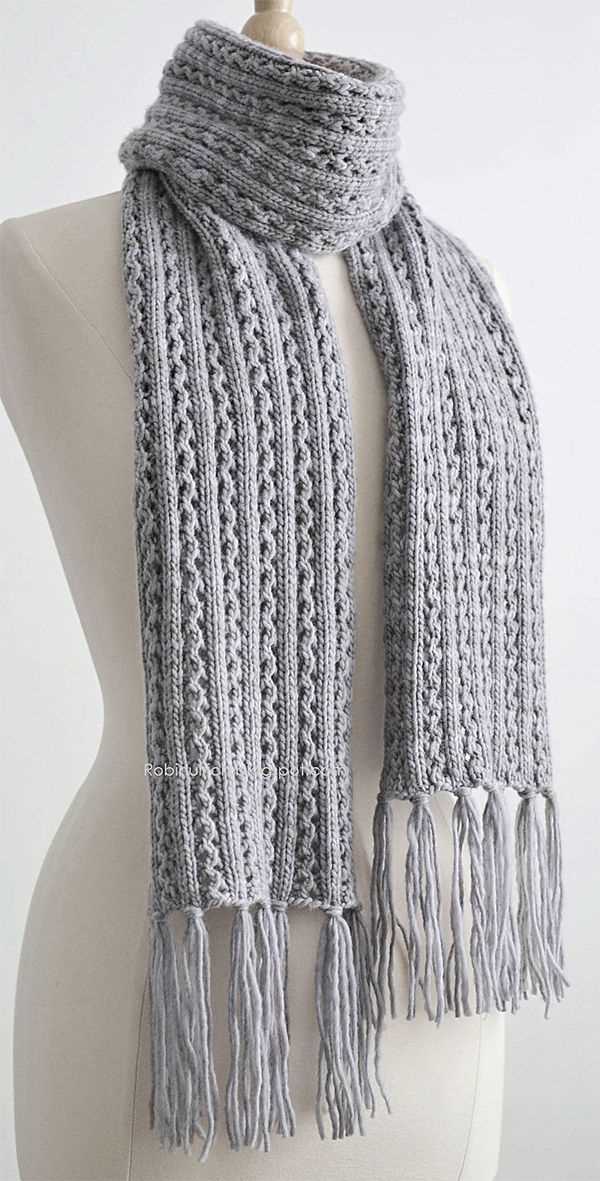
Choosing the right size and type of knitting needles is essential for achieving the desired outcome in your knitting project. The size of the needles determines how tight or loose your stitches will be, while the type of needles affects the overall feel and drape of the finished scarf.
When it comes to needle size, it’s important to follow the gauge specified in the pattern. The gauge is the number of stitches and rows per inch of knitted fabric. To achieve the same gauge as the pattern, you may need to adjust your needle size. If your stitches are too tight and the fabric feels stiff, try using larger needles. On the other hand, if your stitches are too loose and the fabric feels floppy, switch to smaller needles.
Types of knitting needles:
- Straight needles: Straight needles are the most common type of knitting needles. They are long, with a pointed end and a stopper at the other end to prevent stitches from sliding off. They are ideal for knitting flat pieces, such as scarves, as they allow you to easily turn your work at the end of each row.
- Circular needles: Circular needles consist of two needle tips connected by a flexible cable. They are versatile and can be used for both flat knitting and knitting in the round. They are particularly useful for larger projects, as the weight of the knitted fabric is distributed along the cable, reducing strain on your hands.
- Double-pointed needles: Double-pointed needles (DPNs) are shorter needles with pointed ends on both sides. They are typically used for small, circular projects, such as socks or sleeves. DPNs allow you to work in the round, knitting on a small number of needles at a time.
Remember, the choice of needle size and type depends on the project and your personal knitting style. Experiment with different needles to find what works best for you, and don’t be afraid to adjust needle sizes to achieve the desired gauge.
Measuring Tools for Accurate Scarf Lengths
When knitting a scarf, it’s important to have the right tools to ensure an accurate length and a perfect fit. Whether you’re knitting for yourself or someone else, using measuring tools can make all the difference in achieving the desired result.
Tape Measure: A tape measure is one of the most basic but essential tools for measuring the length of a scarf. It allows you to easily measure the width and length of your knitting, ensuring that it matches the desired dimensions.
Knitting Gauge: A knitting gauge is a handy tool that helps you determine the number of stitches and rows per inch in your knitting. By using a gauge, you can check if your stitch count matches the recommended gauge in the pattern, and make any necessary adjustments to achieve the correct scarf length.
Stitch Markers: While not directly a measuring tool, stitch markers can be incredibly useful for keeping track of specific points in your knitting. By placing a stitch marker at the beginning and end of each row or section, you can easily measure the length of your scarf as you knit.
Row Counter: A row counter is a small device that helps you keep track of the number of rows you have knitted. By using a row counter, you can ensure that your scarf has the correct number of rows for the desired length, and avoid any discrepancies.
Measuring Stick: A measuring stick, also known as a ruler, is another practical tool for measuring the length of your scarf. It’s especially useful when you need to measure smaller sections or stitches that may be too cumbersome to measure with a tape measure.
By utilizing these measuring tools, you can have confidence in the accuracy of your scarf’s length. With precise measurements, you’ll be able to create scarves that fit perfectly and showcase your knitting skills in the best way possible.
Stitch Markers and Other Helpful Accessories
When it comes to knitting, having the right tools and accessories can make all the difference in your knitting experience. One such accessory that can be incredibly helpful is stitch markers. These small, often colorful, rings or clips are used to mark specific stitches or pattern repeats, making it easier to keep track of your progress and follow complex patterns. Whether you’re a beginner or an experienced knitter, stitch markers can be a lifesaver.
Using stitch markers is simple. You can simply slip them onto your knitting needle or hook, and they will stay in place until you are ready to remove them. They provide a visual guide for where to begin a new section, where to increase or decrease stitches, or where to work a different stitch pattern. This can be especially useful when knitting in the round or working with lace patterns.
Aside from stitch markers, there are other helpful accessories that can enhance your knitting experience. One such accessory is a row counter. A row counter is a small, handheld device that keeps track of the number of rows you have completed. This can be particularly handy when working on larger projects or intricate stitch patterns that require you to keep track of multiple row repeats.
Another helpful accessory is a cable needle. A cable needle is a small needle with a curved or bent shape that is used to hold stitches temporarily while you work a cable pattern. Cable patterns involve crossing stitches over each other, creating beautiful, intricate designs. A cable needle makes it easier to manipulate and hold the stitches in the correct order, ensuring that your cables turn out perfectly.
Finally, a project bag is an essential accessory for any knitter. A project bag is a bag specifically designed to hold your current knitting project, including your yarn, needles, and any other accessories. It keeps everything organized and easily accessible, making it convenient to take your knitting on the go or work on it wherever you please.
With the right tools and accessories, knitting can be a relaxing and enjoyable hobby. Stitch markers, row counters, cable needles, and project bags are just a few accessories that can make your knitting experience more enjoyable and successful. So next time you sit down to knit, make sure you have these handy tools by your side.
Tips and Tricks for Successful Scarf Knitting
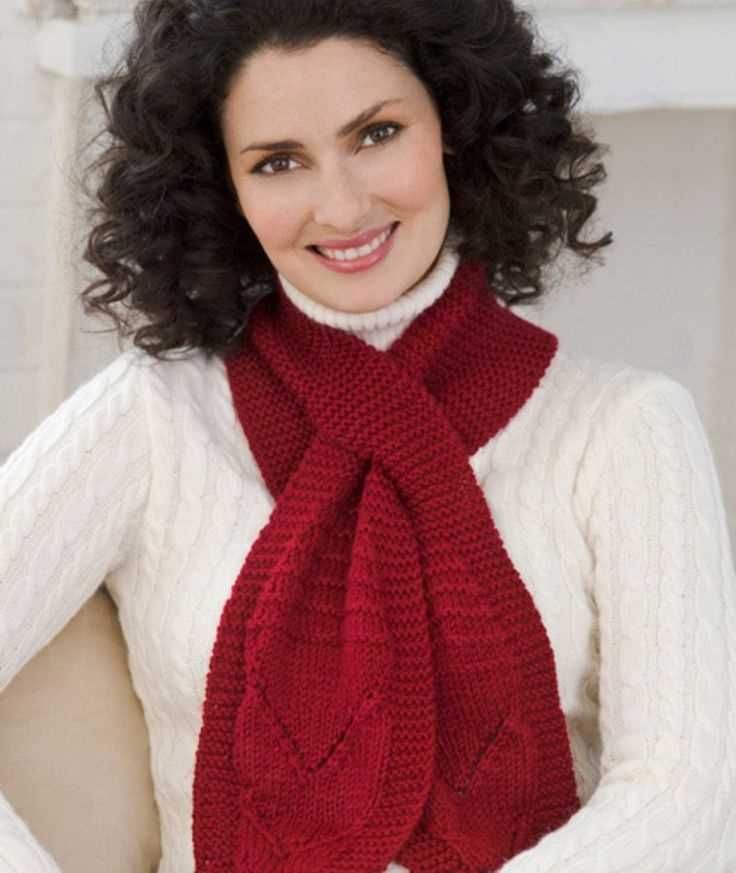
Knitting a scarf can be a relaxing and rewarding project, but it can also present some challenges. Here are some tips and tricks to help you create a beautiful scarf:
1. Choose the right yarn: The type and weight of your yarn will greatly affect the final look and feel of your scarf. Consider the texture, warmth, and drape you desire, and select a yarn that matches your preferences.
2. Practice good tension: Maintaining consistent tension throughout your work is crucial for an even and professional-looking scarf. Take the time to practice your tension before starting the project, and be mindful of it as you knit.
3. Use stitch markers: Stitch markers can be helpful for keeping track of stitch patterns and increasing or decreasing sections. They can save you from counting stitches repeatedly, especially if the pattern is complex.
4. Block your finished scarf: Blocking is the process of gently stretching and shaping your knitted fabric to give it a neat and uniform appearance. Blocking can help even out the stitches and make your scarf look more polished.
5. Experiment with stitch patterns: Don’t be afraid to try different stitch patterns to add interest and variety to your scarf. There are countless options available, from simple seed stitch to intricate lace patterns. Experiment and have fun!
6. Keep track of your progress: It’s easy to lose track of where you are in a pattern, especially if you set your work aside for a while. Use a row counter or make notes to keep track of your progress and ensure that you don’t make mistakes or forget where you left off.
7. Take breaks: Knitting can be a repetitive activity, so it’s important to take breaks to rest your hands and avoid strain. Stretching and doing hand exercises can also help prevent stiffness and discomfort.
8. Don’t be afraid to ask for help: If you encounter difficulties or have questions about your scarf knitting project, don’t hesitate to reach out for help. There are many online communities and forums where experienced knitters are happy to offer advice and support.
With these tips and tricks in mind, you’ll be well-equipped to tackle your next scarf knitting project and create a beautiful, cozy accessory to keep or gift to a loved one.